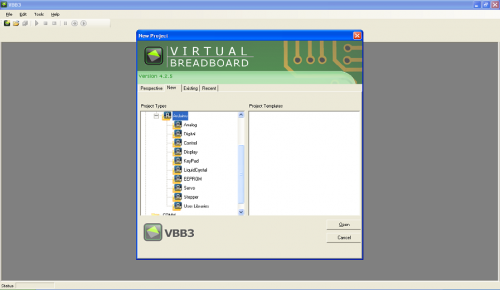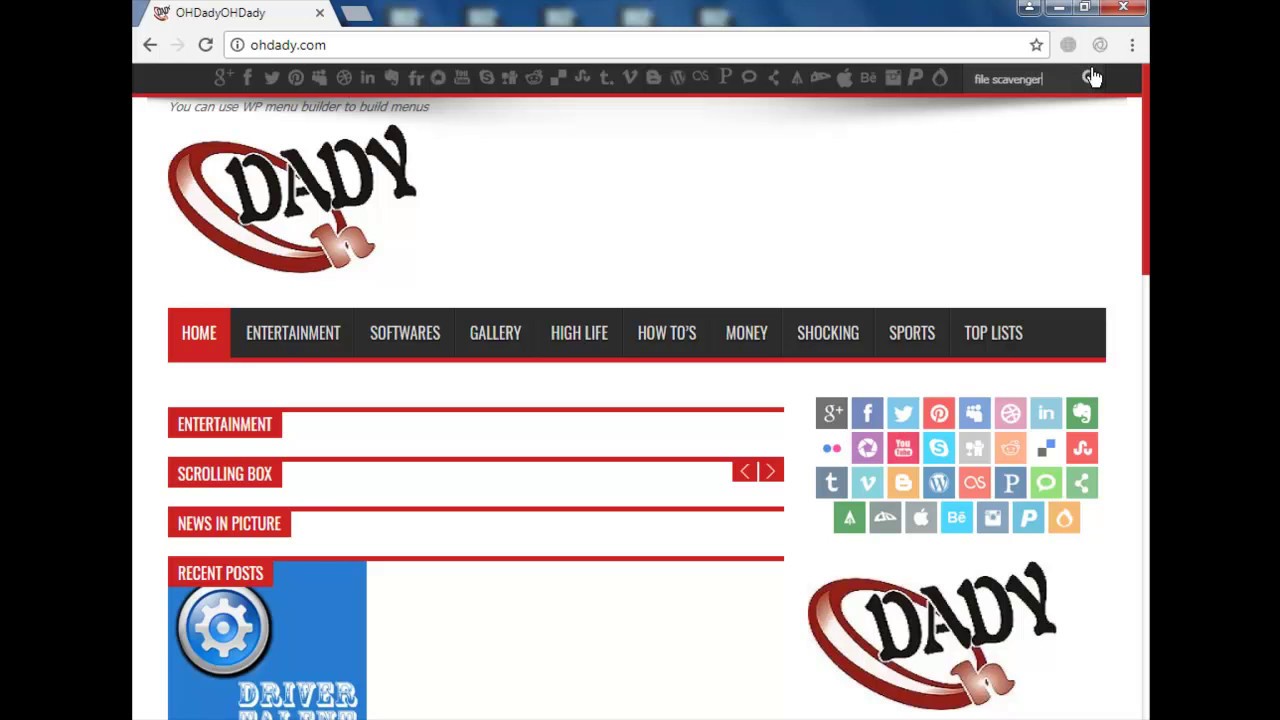File Scavenger® can also recover files from a reformatted or corrupted volume even when the volume has been deleted and its original position and size are unknown. File Scavenger® can scan an entire physical hard drive to look for traces of defunct volumes.
File Scavenger® uses advanced algorithms to handle disks with bad sectors and badly corrupted partitions. It can be installed on a hard drive or run from a portable storage device such as a memory card, removable drive, or CD. To run File Scavenger®, you must log on as a system administrator to the computer where data recovery is intended.
Files can only be restored if the disk areas allocated to the files have not been overwritten by new data. All recovered files should be validated for the integrity of the recovered data.
Features:
Features in Version 5.3
Supports nested spanned volume, RAID and virtual drives (VMDK/VHD/VHDX) in many combinations.
Supports Btrfs.
Groups trivial volumes under one subtree. Trivial volumes contain no or little user data. They may clutter up the results.
Shows deleted data in a separate subtree.
Supports VMFS long scan.
Saves the recovered data from multiple volumes in one operation.
Fixes bugs in Version 5.2.
Features in Version 5.2
Improved support for hard drives with 4K sector size.
Features in Version 5.1
The 64-bit version removes the limit on the number of files the program can scan, provided that sufficient physical memory is available. The 32-bit version can scan no more than about ten million files.
Handling disk number changes when loading a session file. Windows assigns a disk number to a physical drive, such as 'Disk 1', 'Disk 2', etc. Older versions of File Scavenger cannot load a session file if the disk numbers have changed.
New option to create a log for a long scan. The log can be used in a subsequent rescan to significantly reduce scan time.
Improved recovery of PDF documents in raw mode. In previous versions raw PDF documents are sequentially numbered and saved in a flat folder. In version 5 they are arranged by author and date with the document title as the filename.
Improved ZFS and RAIDZ recovery. ZFS is a new file system used primarily by FreeNAS devices.
Improved recovery of the 64-bit ext4 file system.
Features in Version 4.3
Support for the ZFS file system and RAID-Z (single and double parity). ZFS is an open-source file system and logical volume manager used in NAS devices (e.g. FreeNAS) and high-performance servers.
Support for the ReFS file systems. ReFS or Resilient File System is Microsoft's next generation file system for the Windows platforms.
Support for RAID 6.
Implementing custom RAID. Custom RAID is used when special algorithms is needed to reconstruct data.
Raw recovery for Canon RAW Image (.CR2) and Material Exchange Format (.MXF) files.
Improved raw recovery for Office documents.
Streamlining the Advanced Volumes dialogs.
 File Scavenger® Version 5 is a file 'undelete' and data recovery utility for Windows® 8, 7, Vista, Server 2003, XP and 2000. File Scavenger® can recover files that have been accidentally deleted (including files removed from the Recycle Bin, in a DOS window, from a network drive, from Windows Explorer with the SHIFT key held down) provided that recovery is attempted before the files are permanently overwritten by new data. File Scavenger® supports both basic and dynamic disks, NTFS compression, alternate data streams, sparse files, Unicode filenames, etc. Except in severe cases, both the file and the folder path leading to the file can be recovered.
File Scavenger® Version 5 is a file 'undelete' and data recovery utility for Windows® 8, 7, Vista, Server 2003, XP and 2000. File Scavenger® can recover files that have been accidentally deleted (including files removed from the Recycle Bin, in a DOS window, from a network drive, from Windows Explorer with the SHIFT key held down) provided that recovery is attempted before the files are permanently overwritten by new data. File Scavenger® supports both basic and dynamic disks, NTFS compression, alternate data streams, sparse files, Unicode filenames, etc. Except in severe cases, both the file and the folder path leading to the file can be recovered.File Scavenger® can also recover files from a reformatted or corrupted volume even when the volume has been deleted and its original position and size are unknown. File Scavenger® can scan an entire physical hard drive to look for traces of defunct volumes.
Tascam ixz review. Download Quetek File Scavenger 5.2 Professional Full (with crack) File Scavenger® Version 5 is a file 'undelete' and data recovery utility for Windows® 8, 7, Vista, Server 2003, XP and 2000. File Scavenger® can recover files that have been accidentally deleted (including files removed from the Recycle Bin, in a DOS window, from a network. A brief introduction to fluid mechanics 5th edition solutions pdf.
VirtualBreadboard was designed as an emulator for Breadboard integrated circuits, being able to function as a development environment for microcontrollers, as well. Breadboard is a general term in. Virtual Breadboard (VBB) is a design and learning tool for creating intelligent electronic applications. Virtual Breadboard specializes in microcontroller electronic applications driven by the. VirtualBreadboard (VBB) is an emulator for Breadboard integrated circuits. It’s also able to function as a developmental environment for microcontrollers. The application can be used for developing and debugging microcontrollers and emulating. Full software details. Description Virtual Breadboard (VBB) is a design and learning tool for creating intelligent connected electronic applications. Virtual Breadboard specializes in mixed-reality virtual circuits where real-microcontrollers interface with virtual components and circuits via. Virtual Breadboard App Get the Virtual Breadboard Windows Store App. Avatar Hardware Avatar Hardware Web Shop. YouTube Tutorials in YouTube format. User Manaul Virtual Breadboard Documentation Tutorials Tutorials in CodeLab format. Forum Community Forum. 
File Scavenger® uses advanced algorithms to handle disks with bad sectors and badly corrupted partitions. It can be installed on a hard drive or run from a portable storage device such as a memory card, removable drive, or CD. To run File Scavenger®, you must log on as a system administrator to the computer where data recovery is intended.
- File Scavenger® Version 3.2.22 is an index 'undelete' and information recuperation utility for Windows® 8, 7, Vista, Server 2003, Xp and 2000.
- File scavenger 5.2 serial numbers are presented here. No registration. The access to our data base is fast and free, enjoy.
Files can only be restored if the disk areas allocated to the files have not been overwritten by new data. All recovered files should be validated for the integrity of the recovered data.
Features:

Features in Version 5.2
Improved support for hard drives with 4K sector size.
Features in Version 5.1
The 64-bit version removes the limit on the number of files the program can scan, provided that sufficient physical memory is available. The 32-bit version can scan no more than about ten million files.
Handling disk number changes when loading a session file. Windows assigns a disk number to a physical drive, such as 'Disk 1', 'Disk 2', etc. Older versions of File Scavenger cannot load a session file if the disk numbers have changed.
New option to create a log for a long scan. The log can be used in a subsequent rescan to significantly reduce scan time.
Improved recovery of PDF documents in raw mode. In previous versions raw PDF documents are sequentially numbered and saved in a flat folder. In version 5 they are arranged by author and date with the document title as the filename.
Improved ZFS and RAIDZ recovery. ZFS is a new file system used primarily by FreeNAS devices.
Improved recovery of the 64-bit ext4 file system.
Features in Version 4.3
Support for the ZFS file system and RAID-Z (single and double parity). ZFS is an open-source file system and logical volume manager used in NAS devices (e.g. FreeNAS) and high-performance servers.
Support for the ReFS file systems. ReFS or Resilient File System is Microsoft's next generation file system for the Windows platforms.
Support for RAID 6.

 Implementing custom RAID. Custom RAID is used when special algorithms is needed to reconstruct data.
Implementing custom RAID. Custom RAID is used when special algorithms is needed to reconstruct data.Raw recovery for Canon RAW Image (.CR2) and Material Exchange Format (.MXF) files.
Improved raw recovery for Office documents.
File Scavenger 5.2 License Key
Streamlining the Advanced Volumes dialogs.File Scavenger 5.2
